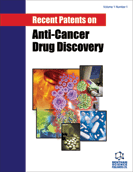
Abstract
A major challenge for cancer treatment is the preferential and irreversible killing of tumor cells and minimal damage of normal tissues, both in the site of the malignancy and in the body. The agents used in boron neutron capture therapy (BNCT) are supposed to have the following advantages over many conventional chemotherapeutics: 1) when irradiated with thermal neutrons, an unstable isotope 11B is formed whose rapid decay yields local radioactivity and a thermal effect; 2) because the free path of the released particles is close to the cell diameter, the tissues outside the tumor should gain less damage; 3) local radioactivity and heat should be harmful for cells that, in the course of their natural history, acquired the determinants of altered response to many toxic stimuli. However, a higher specificity of damage would be achieved if the drugs accumulate mostly in cancer cells rather than in non-malignant counterparts. Therefore, optimization of agents for BNCT presumes the design of chemicals with improved accumulation / retention in cancer cells. In particular, carboranyl-substituted porphyrins, the stable conjugates of macrocyclic porphyrins with complex boron-containing polyhedra, are considered good candidates for BNCT due to their uptake by cancer cells and high boron content. Importantly, the proposed mechanisms of pharmacological effects of carboranylporphyrins make these compounds potentially appropriate for elimination of pleiotropically resistant tumor cells.
Keywords: boron, carboranylporphyrins, anticancer drugs, tumor cells, boron neutron capture therapy
 7
7


















